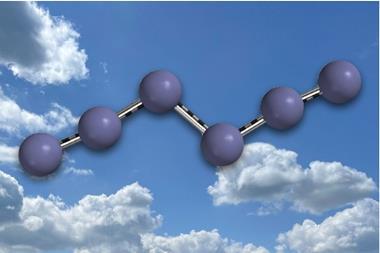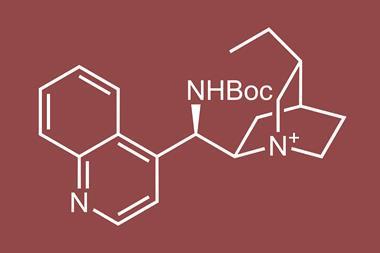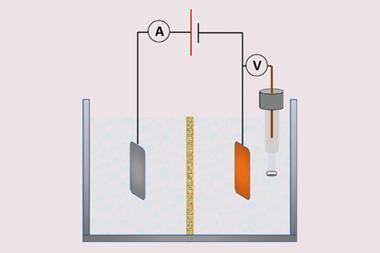Electrocatalysis can be used to functionalise C(sp3)–H bonds along a polymer chain, new research shows. The functionalised polymers can then be modified using click chemistry and upcycled into a new material.
The problems created by single-use plastics are well known, with the visible growth of the Great Pacific garbage patch bringing fresh concern about waste accumulating in our oceans. Scientists have therefore been developing strategies to upcycle polymers. Some of these strategies involve functionalising C(sp3)–H bonds along the polymer chain, which enable subsequent chemical reactions that transform the polymer into a material with new properties and potential.
However, many previously reported polymer C–H functionalisation methods require stoichiometric amounts of chemical oxidants, such as hypervalent-iodine. This would be expensive and produce huge volumes of toxic byproducts if applied to a significant proportion of plastic waste.
Now, Lutz Ackermann at the University of Göttingen, Germany, and colleagues have developed a manganese-based electrocatalysis process to functionalise polymer C–H bonds with azide groups, without the need for chemical oxidants. Azides are especially useful functional groups as they can take part in click chemistry through a copper-catalysed azide-alkyne cycloaddition. Their electrocatalysis process doesn’t produce harmful side products but it does yield hydrogen, which could be re-purposed as a fuel.

‘Low catalyst loading is a definite advantage,’ comments Erin Stache, a synthetic chemist developing polymer upcycling strategies at Cornell University in the US. ‘However, it appears to come at the cost of percentage functionalisation, which is lower than previously reported examples.’ This lower level of C–H functionalisation may not actually present a problem, Stache continues, as ‘even a low percentage … can dramatically change the physical properties of the polymer.’
Ackermann’s team powered their electrocatalysis method with sunlight and tested it on a variety of homopolymers and copolymers, before moving onto commercial plastic products such as Styrofoam. They also demonstrated the azide-functionalised polymers could be upcycled with a cycloaddition reaction to make, for example, a fluorescently-labelled polymer that could be used for tracer-based sorting.
The team showed that the reaction worked on 4g of Styrofoam and Ackermann says he would ‘love to see [the] process scaled up to an industrial level’. Stache describes it as working ‘comparably well on post-consumer polystyrene materials’ but adds that for real-world applications the amount of sodium azide it requires would need to be decreased.
Ackermann hopes to expand the work to other functional groups, adding that they ‘already have some encouraging preliminary results’.
















No comments yet